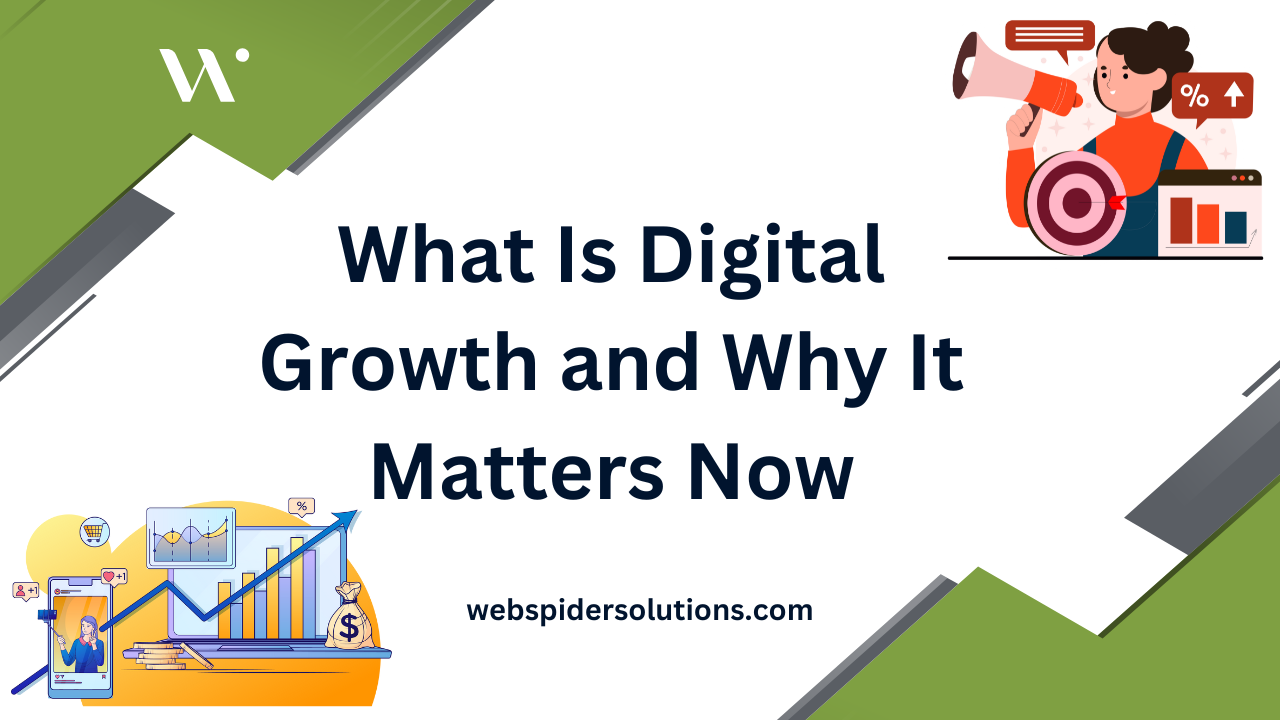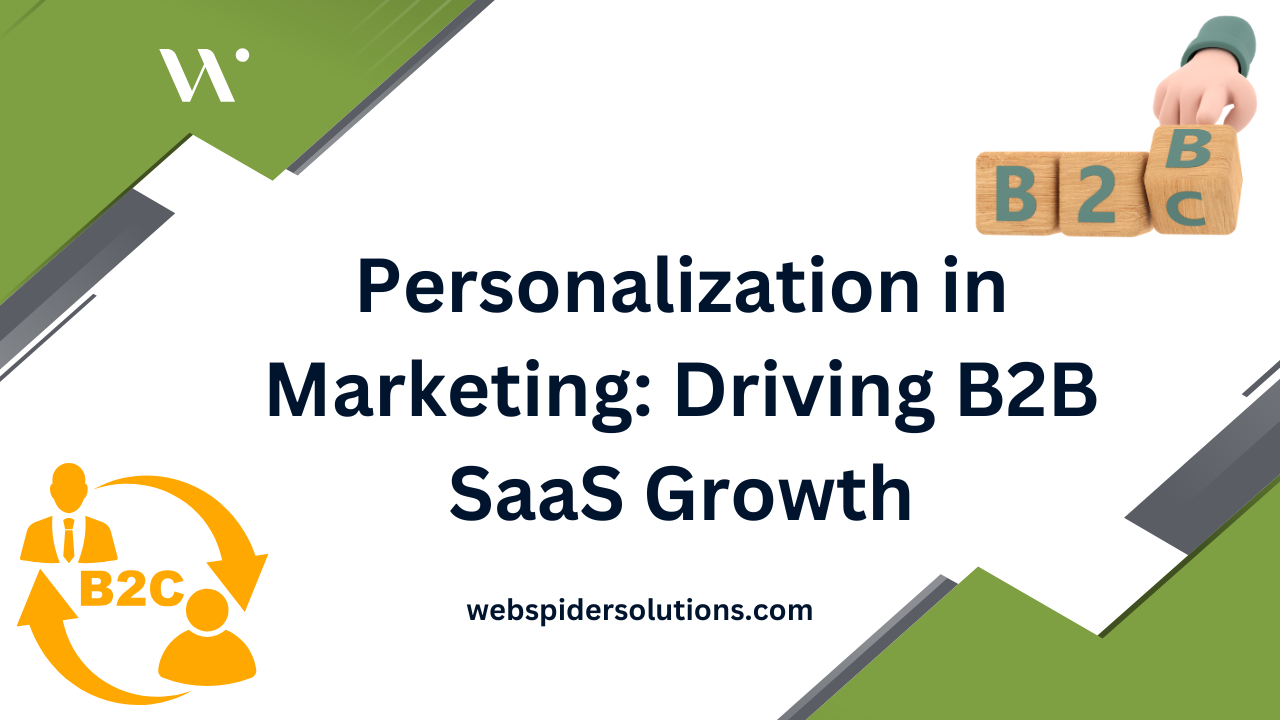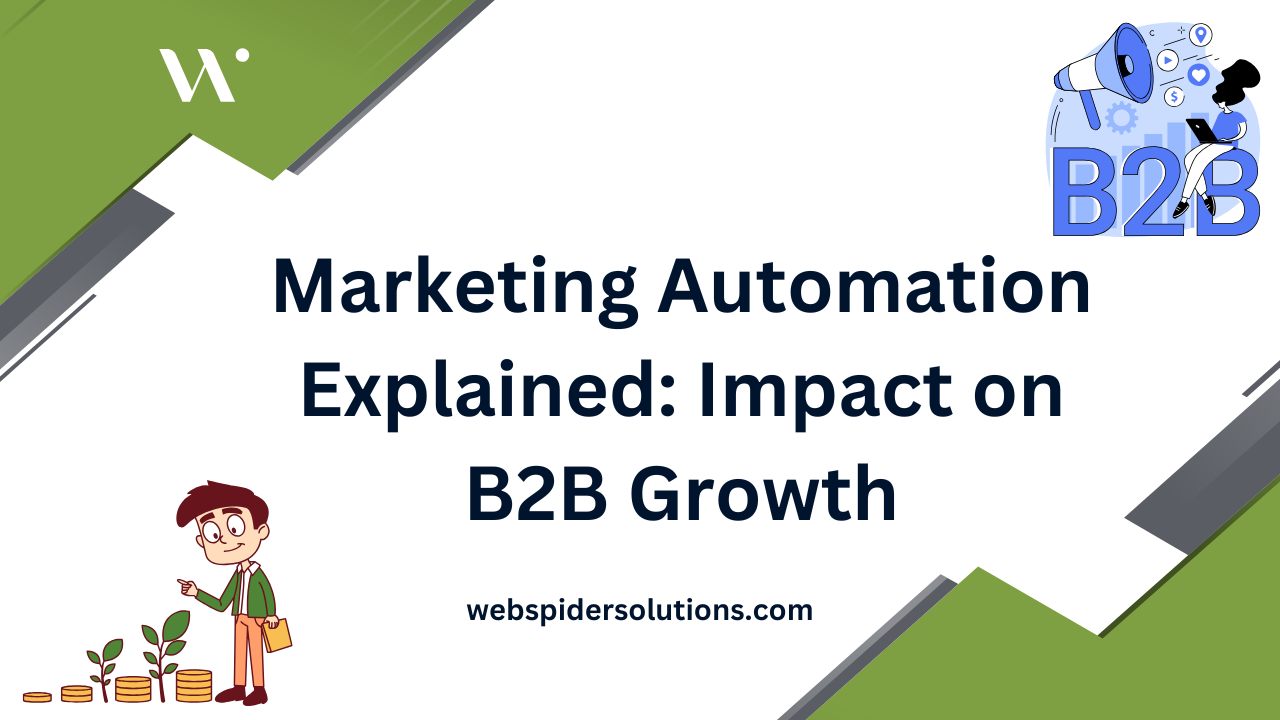Expanding your website into new languages can open doors to massive growth. Over half of global web users say they only engage if content is in their own language. That sounds like an open invitation to global audiences, right? Yet, chasing international traffic with quick translations often backfires. The real wins come from mastering the hidden art of cultural and technical localization most competitors overlook.
Table of Contents
- Why Multilingual Website Seo Matters
- Choosing The Right Multilingual Seo Structure
- Essential On-Page And Technical Seo Tactics
- Common Pitfalls And How To Avoid Them
Quick Summary
| Takeaway | Explanation |
|---|---|
| Invest in multilingual SEO for expansion | Multilingual SEO unlocks global market opportunities and connects businesses with diverse audiences. |
| Choose the right structure for SEO | Select between subdirectories, subdomains, or country-specific domains to optimize SEO performance. |
| Prioritize content localization over translation | Effective localization involves adapting content to resonate with local cultures, not just translating words. |
| Implement hreflang tags correctly | Proper use of hreflang tags directs users to the most appropriate language version, enhancing user experience. |
| Avoid duplicate content through unique creation | Develop original content for each language version to prevent penalties from search engines and improve rankings. |
Why Multilingual Website SEO Matters
In the digital era, businesses are no longer confined by geographical boundaries. The internet has transformed how companies reach and engage with global audiences, making multilingual website SEO a critical strategy for sustainable growth. By optimizing websites for multiple languages, organizations can dramatically expand their market reach, connect with diverse customer segments, and establish a robust international digital presence.
The Global Market Opportunity
Businesses that invest in multilingual website SEO unlock unprecedented opportunities for expansion. A comprehensive study analyzing international web traffic revealed significant user dissatisfaction with non-English website versions, highlighting the urgent need for culturally and linguistically tailored content. Companies that effectively localize their digital platforms can tap into markets previously considered unreachable.
Moreover, multilingual SEO goes beyond mere translation. It requires a nuanced understanding of cultural contexts, search behaviors, and regional keyword variations. For instance, a digital marketing strategy that works in the United States might need substantial modifications to resonate with audiences in Japan or Brazil.
Economic and Strategic Advantages
The economic potential of multilingual website optimization is substantial. Research on university website rankings demonstrated that SEO metrics like backlink quantity and page rank significantly impact online visibility. By implementing a robust multilingual SEO strategy, businesses can:
- Expand Market Penetration: Reach new customer segments across different linguistic regions
- Enhance User Experience: Provide content that feels native and authentic to international users
- Improve Search Engine Rankings: Increase visibility in region-specific search results
Technical Complexity and User Experience
Multilingual website SEO is not just about translation but creating a seamless, culturally relevant digital experience. Research on multilingual user interface design underscored that English versions of websites often provide superior usability. This means businesses must invest in comprehensive localization strategies that go beyond literal translation.
Successful implementation requires technical expertise in handling hreflang tags, creating region-specific content, and understanding local search engine algorithms. Companies need to consider factors like local keyword research, cultural nuances, and region-specific user experience design.
Learn more about our approach to global digital strategies and how we help businesses navigate the complex landscape of international digital marketing.
Choosing the Right Multilingual SEO Structure
Selecting the appropriate multilingual website structure is a critical decision that directly impacts your international SEO performance and user experience. The right architecture determines how search engines index and understand your content across different languages, ultimately influencing your global digital visibility.
Domain Strategy Options
Research from DN.org highlights three primary domain strategies for multilingual websites:
- Subdirectory Approach: Using a single domain with language-specific folders
- Subdomain Method: Creating separate subdomains for each language
- Country-Specific Domains: Establishing distinct domains for different regions
Each strategy presents unique advantages and challenges. The subdirectory approach often provides the most straightforward SEO implementation, consolidating domain authority and simplifying website management. Subdomains offer more geographical specificity, while country-specific domains can provide stronger local search signals.
Below is a comparison table outlining the three main domain strategy options for multilingual websites, including their benefits and challenges as described in the article.
| Domain Strategy | Description | Key Benefits | Main Challenges |
|---|---|---|---|
| Subdirectory Approach | Single domain with language-specific folders | Easiest for SEO, consolidates authority | Less country-specific targeting |
| Subdomain Method | Separate subdomains for each language | More geographical specificity | Potentially diluted domain authority |
| Country-Specific Domains | Distinct domains for different regions | Strongest local search signals | Resource-intensive management |
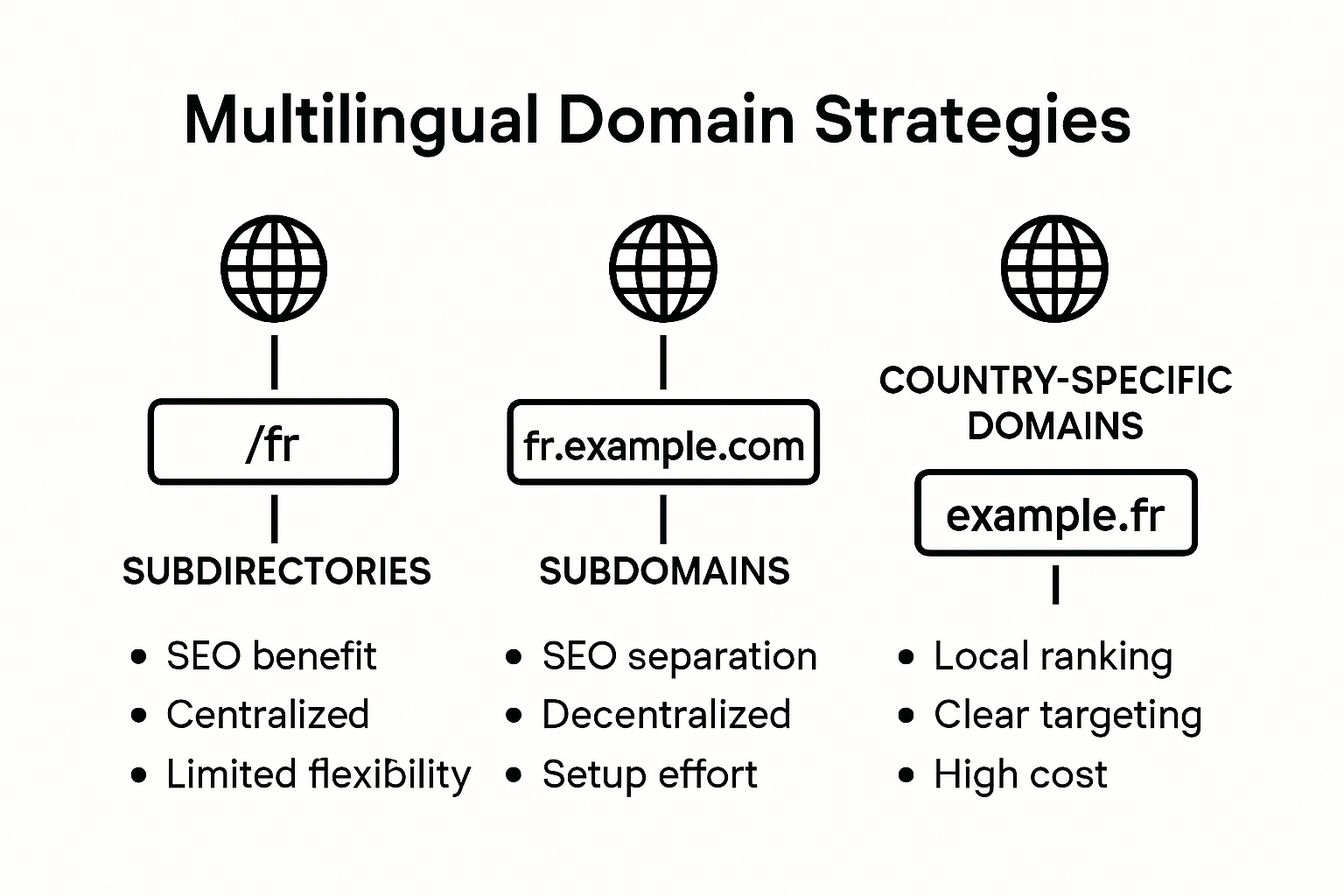
Technical Implementation Considerations
The Wikipedia article on Hreflang emphasizes the critical role of technical implementation in multilingual SEO. The hreflang attribute serves as a crucial HTML meta element that helps search engines understand language and geographic targeting of webpages. Proper implementation ensures users are directed to the most relevant language version based on their preferences and location.
The Boston Research Center recommends several best practices for technical optimization:
- Create comprehensive multilingual XML sitemaps
- Translate URL slugs and SEO metadata
- Implement hreflang tags correctly
- Ensure consistent content across language versions
Strategic Content Localization
Beyond technical structure, successful multilingual SEO requires deep cultural understanding and strategic content localization. This means more than direct translation it involves adapting content to resonate with specific regional audiences, considering linguistic nuances, cultural references, and local search behaviors.
Learn more about our comprehensive approach to global content strategies and how we help businesses navigate the complexities of international digital presence.
The right multilingual website structure is not a one-size-fits-all solution. It demands careful analysis of your business goals, target markets, technical capabilities, and resource constraints. Businesses must conduct thorough research and potentially consult with SEO experts to develop a strategy that maximizes global reach and search engine performance.
Essential On-Page and Technical SEO Tactics
Multilingual website SEO demands precise technical optimization and strategic on-page tactics to ensure global search engine visibility. Successful implementation requires a comprehensive approach that goes beyond simple translation, focusing on technical excellence and culturally nuanced content strategies.
Metadata and Keyword Optimization
According to the IEEE Computer Society, metadata plays a critical role in search engine optimization. For multilingual websites, this means creating precise, keyword-rich page titles and meta descriptions that are tailored to each language version. Experts recommend crafting concise titles (50-60 characters) and descriptions (150-160 characters) that not only include relevant keywords but also capture the linguistic and cultural essence of the target market.
Research from Georgia Digital Services highlights the importance of strategic keyword placement. In a multilingual context, this goes beyond direct translation. It involves:
- Localized Keyword Research: Understanding region-specific search terms
- Contextual Integration: Naturally incorporating keywords in titles, URLs, headings, and body text
- Cultural Relevance: Ensuring keywords resonate with local audience search behaviors
Technical Site Structure and Performance
Columbia University’s digital guidelines emphasize the significance of a well-organized site structure for optimal SEO performance. For multilingual websites, this means creating a clear, logical navigation system that helps both users and search engines understand content relationships across different language versions.
Key technical considerations include:
- Creating clean, descriptive URLs for each language version
- Implementing a logical site hierarchy
- Developing topic clusters that work across language boundaries
- Ensuring fast loading speeds and mobile responsiveness for all language versions
The following checklist table summarizes essential technical and content tasks for effective multilingual website SEO, providing a clear overview of areas to address to achieve optimal performance.
| SEO Task | Description | Status (To Do/Done) |
|---|---|---|
| Implement hreflang tags | Ensure correct language/geolocation targeting | To Do |
| Translate SEO metadata | Localize titles and meta descriptions | To Do |
| Create multilingual XML sitemaps | Include all language versions in sitemaps | To Do |
| Develop unique content per language | Avoid duplicate penalties, ensure relevance | To Do |
| Translate URL slugs | Use localized, descriptive URLs | To Do |
| Ensure mobile responsiveness | Optimize design for all devices | To Do |
| Establish logical site hierarchy | Maintain clarity across languages/sites | To Do |
Content Localization and Technical Optimization
True multilingual SEO transcends mere translation. It requires a holistic approach that combines technical precision with cultural intelligence. This means adapting content not just linguistically, but also in terms of local search intent, user experience, and cultural nuances.
Technical elements like hreflang tags, XML sitemaps, and proper canonical tags become crucial in signaling the correct language version to search engines. Each language version must be treated as a unique entity while maintaining the core brand message.

Discover our advanced technical SEO solutions for navigating the complex world of multilingual website optimization. Our experts understand that successful global SEO is about creating a seamless, culturally intelligent digital experience that resonates across different markets.
Common Pitfalls and How to Avoid Them
Multilingual website SEO presents complex challenges that can derail international digital strategies if not carefully managed. Understanding and proactively addressing these potential pitfalls is crucial for businesses seeking to expand their global digital footprint.
Content Duplication and Linguistic Challenges
Research from the Cademix Institute of Technology reveals significant risks associated with multilingual content management. One of the most critical challenges is avoiding duplicate content penalties from search engines. Simply translating content word-for-word can trigger algorithmic filters that may negatively impact search rankings.
Key strategies to mitigate these risks include:
- Unique Content Creation: Developing original, culturally relevant content for each language version
- Hreflang Tag Implementation: Correctly signaling language variations to search engines
- Canonical Tag Usage: Indicating primary content versions to prevent duplicate content issues
Cultural Sensitivity and Localization Complexities
A comprehensive study on multilingual website usability uncovered profound user dissatisfaction with translations that lack cultural nuance. Businesses often underestimate the depth of localization required to truly engage international audiences. This goes far beyond literal translation and demands a sophisticated understanding of cultural contexts, idioms, and local communication styles.
Common localization pitfalls include:
- Literal Translation: Directly translating content without considering cultural context
- Ignoring Local Search Behaviors: Failing to adapt content to region-specific search patterns
- Overlooking Cultural Sensitivities: Using imagery, language, or references that may be inappropriate in different cultural contexts
Technical and Accessibility Challenges
Research from the International ACM SIGACCESS Conference highlights the lack of standardized practices in multilingual website assessments. Technical challenges can significantly impact user experience and search engine performance. These include:
- Inconsistent URL structures across language versions
- Improper implementation of language-specific metadata
- Neglecting local technical search preferences
- Failing to optimize for region-specific search engine algorithms
Successful multilingual SEO requires a holistic approach that combines technical precision, cultural intelligence, and strategic content development. It is not merely about translating words, but about creating a truly global digital experience that resonates with diverse audiences.
Learn how to navigate the complexities of multilingual SEO and avoid common pitfalls that can derail your international digital strategy. Our experts provide comprehensive guidance to ensure your multilingual website delivers exceptional performance across global markets.
Frequently Asked Questions
What is multilingual website SEO?
Multilingual website SEO refers to the strategies used to optimize a website for search engines in multiple languages, facilitating better search visibility and user engagement across diverse linguistic audiences.
Why is content localization important for multilingual SEO?
Content localization is crucial because it adapts the website content to resonate with local cultures and languages, enhancing user experience and increasing the likelihood of engagement from international visitors.
What domain structure should I choose for a multilingual website?
You can choose between subdirectories, subdomains, or country-specific domains. Each has its own advantages and should align with your SEO goals and resources.
How can I avoid duplicate content issues in multilingual SEO?
To avoid duplicate content issues, create original, localized content for each language version, implement hreflang tags properly, and use canonical tags to indicate the primary version of your content.
Ready to Remove Barriers to International Growth?
If your organization feels held back by weak multilingual SEO, low foreign traffic, or disappointing engagement from non-English markets, you’re not alone. This article explores how technical errors, poor content localization, and complex site structures can stifle your global reach. Many businesses hit a wall with duplicated content, ineffective hreflang tags, and translation strategies that miss cultural context. Instead of seeing international SEO as a risk, start viewing it as your path to global visibility and business growth. For more on market-defining digital strategies, explore our curated insights in Artificial Intelligence Archives – Web Spider Solutions.
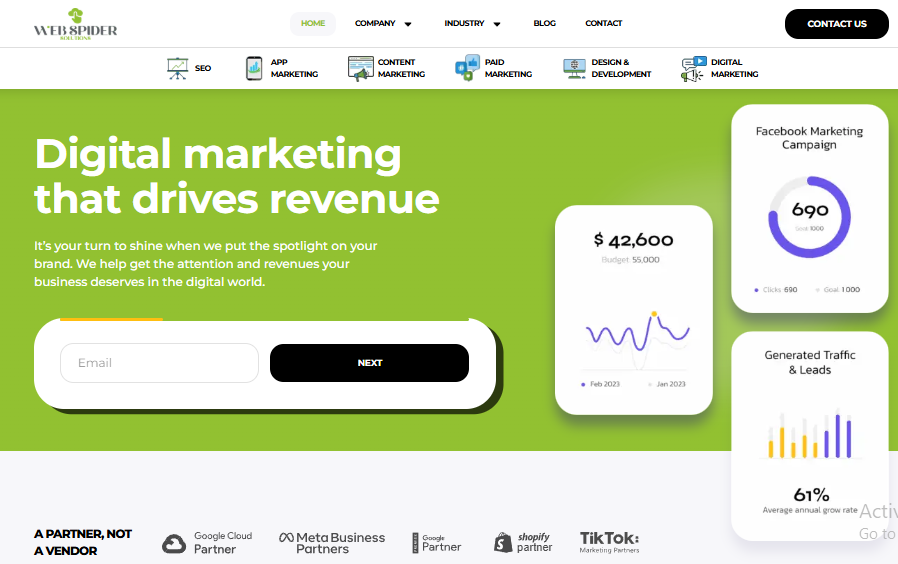
Let our experts help you implement a multilingual SEO approach that truly connects with international users. At Web Spider Solutions, we blend technical SEO, cultural adaptation, and smart site architecture to unlock new revenue streams across the world. Take control of your global expansion. Contact us today for a custom strategy session and boost your website’s authority in every language.
Recommended








